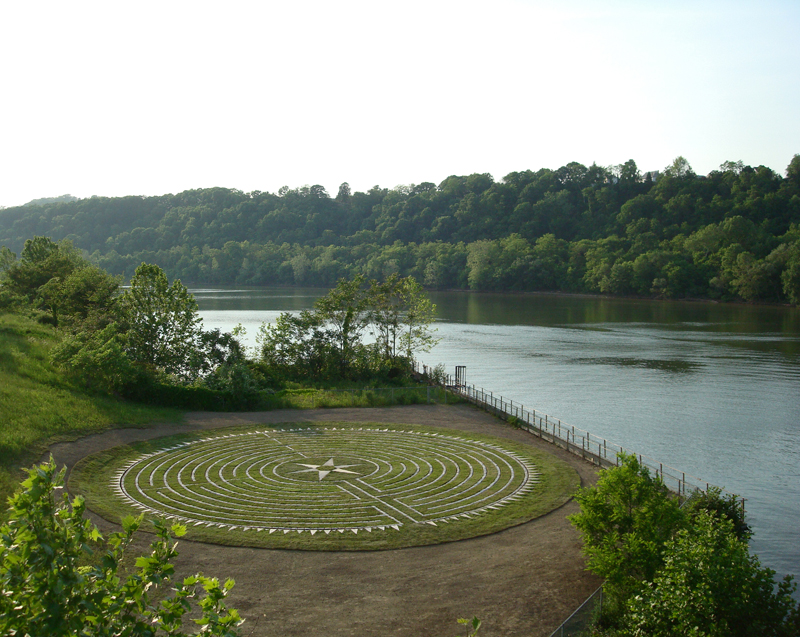
Answer me this, please
Homestead, PA is the site of: please pick one answer- The Waterfront shopping mall
- a water park that blocks the bike trail from Pittsburgh to DC
- The Homestead Strike that left 10 men dead
The Homestead Strike
The Homestead Strike was a labor lockout and strike which began on June 30, 1892, culminating in a battle between strikers and private security agents on July 6, 1892. It is one of the most serious labor disputes in U.S. history. The dispute occurred in the Pittsburgh-area town of Homestead, Pennsylvania, between the Amalgamated Association of Iron and Steel Workers (the AA) and the Carnegie Steel Company.After protracted negotiations, Carnegie locked the Union out of the mill with the intent of breaking the union. The Union surrounded the mill and vowed that it would not be staffed by non-union labor. Carnegie planned to take control of the mill by placing 300 Pinkerton agents, armed with rifles, into the property from the river under cover of darkness.
Workers kept the Pinkertons off the property. Gunfire was exchanged by both sides. The Pinkertons were trapped on their barges when their tugboats left under fire. The Union tried to set the barges on fire with the Pinkertons on board.

In the end, the steel mill won. Carnegie and Frick used the Homestead strike to break the AA. In 1891 there were 24000 members. The Homestead strike took place in 1892. In 1895 it was down to 8000. Steel mills were not significantly unionized again until the United Steelworkers (headquarters: Pittsburgh) organized in 1942.
Homestead : a big part of Pittsburgh history
The Homestead Works were part of the backbone of Pittsburgh's steel industry from the 1890s through the 1980's. Generations of Pittsburghers earned their livings from the steel mills, now long ago shuttered, torn down, and the materials hauled away for scrap.
Gentrification and Ignorance
As attempts have been made to develop the brownfields and factory sites, a huge shopping center has taken over the land once used for the Homestead Works. Target, Home Depot, and a movie theater draw people into this upscale shopping center, isolated from the real town of Homestead as if by a moat. I'd wager that very few visitors can tell the story of the Homestead Strike.Artist Lorraine Vullo created the Homestead Labyrinth as a memorial to the history that occured there. (Read the Artist's Statement (pdf) here.
If this doesn't garner attention during Netroots Nation 2009, something's wrong.
This is the sort of memorial that's low profile, non-intrusive, low maintenance, quiet and respectful. My compliments to the artist and to the people who helped make it happen.
A photo from Mark Rauterkus:

It is NOT true that bicyclists riding from Pgh to DC will need to guide their bikes through the labyrinth.



5 comments:
Wrote a research paper about the Homestead Strike in law school years ago. The real story of this event was the collusion among the political, economic and legal establishments to crush the union after the Pinkerton confrontation. You'll never find a clearer example of the moneyed and powerful taking care of their own. *Plus ca change...*
BTW, the book to read is Arthur Burgoyne's "The Homestead Strike of 1892," from the U. of Pgh. Press (1979).
Ken, may I ask - it seems like this (in its day) was the equivalent of the 1981 PATCO strike in terms of a successful short-term action, introduction of replacement workers, collapse of the strike, breaking the union, followed by a subsequent low period for organized labor. Is that valid? Thanks, Vannevar.
Don't know much about PATCO, but that sounds like a fair analogy. The biggest difference between the two events was the media stage on which they played out, and the political context that surrounded them.
Reagan's PATCO takedown was, as I recall, of a piece with an overall drive to deregulate and privatize as much of the private sector as possible, as quickly as possible. The overall results for organized labor may have been much the same after both episodes, but I'd say that those long-term national consequences were incidental in the case of Homestead, central and intentional in the case of PATCO.
I think it's absurd to have a labyrinth at this site. It's obvious it was just an attempt by some failed artist to get grant money to do some project -- any project. I'm sure this wasn't what the striking workers had in mind when they put their lives and livelihoods on the line.
That's a really negative take. If you go to the labyrinth, you'll see that it's a very beautiful and tranquil site. Obviously the workers did not have a labyrinth in mind when they were fighting for their lives and livelihoods, but it's correct to remember them, and this is a good way to do it.
Post a Comment
Comments and Feedback? Love that stuff. Please leave your thoughts in the box below--